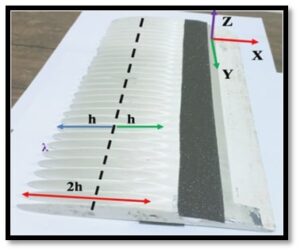SUBHASH MISHRA
Dhanbad, July 12: A group of faculty members and research scholars of IIT Indian School of Mines (ISM) Dhanbad under Dr Subramanian Narayanan, associate professor of the Department of Mechanical Engineering has developed a low-noise next-generation airfoils used in aircraft.
The researchers have developed an airfoil by designing a wavy leading edge (LE) and trailing edge (TE) to enhance the reduction of overall broadband airfoil noise.
The Leading Edge (LE) is the front part of the airfoil and the Trailing E (TE) edge is the aft or behind part of the airfoil.
Airfoil is a designed curved surface structure
Researchers pointed out that an airfoil or aerofoil is a designed curved surface structure that forms the basic designs of fans, wings and tail planes of most aircraft. .
Prof Narayanan informed in detail about the project saying the introduction of wavy serrations at LE as well as TE of NACA airfoils simultaneously for achieving the noise reductions over a wide range of frequencies is a first step in this direction.
Also Read- Centre notifies to observe Emergency Day, June 25, as ‘Samvidhaan Hatya Diwas’

Airfoil turbulence interaction noise
“Lateral Edge Serrations are used as a passive means for reducing airfoil turbulence interaction noise while TE Serrations are used for reducing self-noise,” said Prof Narayanan.
He said the best LE and TE serrations are applied to NACA airfoils for developing low noise next generation airfoils which find numerous applications in the wind turbine blades, fan blades, open rotors, aircraft wings etc.
Prof Narayanan, who is also the principal investigator of the project said that theoretically and experimentally they ( researchers) have gone through many permutations and combinations to investigate the far field noise prediction and at the same time faced many ups and downs.
“However, now we can control the entirety of total broadband noise (Interaction +self-noise) with complete success to develop low noise LE-TE serrated airfoil of the next generation,” claimed Narayanan.


